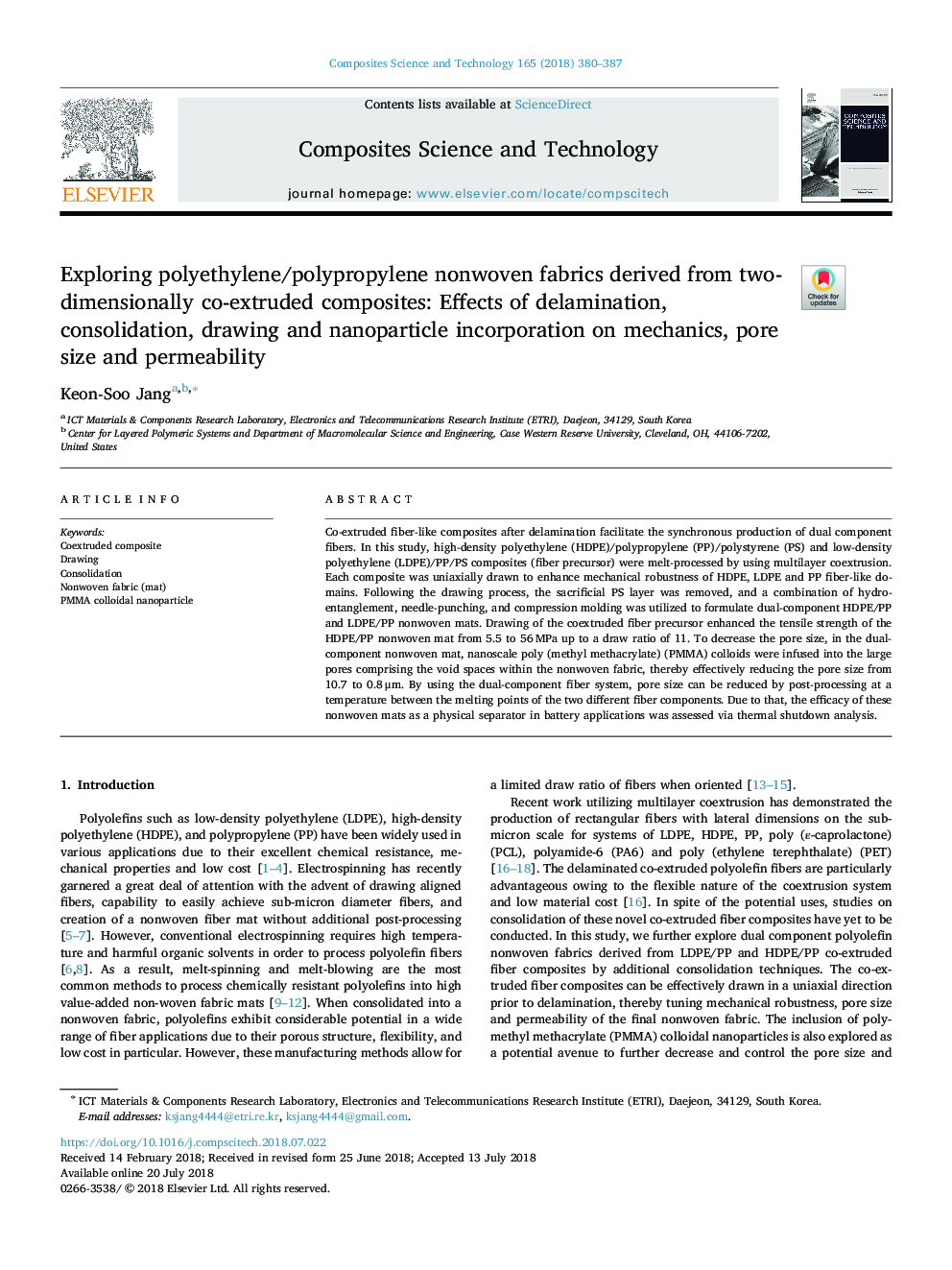| Article ID | Journal | Published Year | Pages | File Type |
|---|---|---|---|---|
| 7214170 | Composites Science and Technology | 2018 | 8 Pages |
Abstract
Co-extruded fiber-like composites after delamination facilitate the synchronous production of dual component fibers. In this study, high-density polyethylene (HDPE)/polypropylene (PP)/polystyrene (PS) and low-density polyethylene (LDPE)/PP/PS composites (fiber precursor) were melt-processed by using multilayer coextrusion. Each composite was uniaxially drawn to enhance mechanical robustness of HDPE, LDPE and PP fiber-like domains. Following the drawing process, the sacrificial PS layer was removed, and a combination of hydroentanglement, needle-punching, and compression molding was utilized to formulate dual-component HDPE/PP and LDPE/PP nonwoven mats. Drawing of the coextruded fiber precursor enhanced the tensile strength of the HDPE/PP nonwoven mat from 5.5 to 56â¯MPa up to a draw ratio of 11. To decrease the pore size, in the dual-component nonwoven mat, nanoscale poly (methyl methacrylate) (PMMA) colloids were infused into the large pores comprising the void spaces within the nonwoven fabric, thereby effectively reducing the pore size from 10.7 to 0.8â¯Î¼m. By using the dual-component fiber system, pore size can be reduced by post-processing at a temperature between the melting points of the two different fiber components. Due to that, the efficacy of these nonwoven mats as a physical separator in battery applications was assessed via thermal shutdown analysis.
Keywords
Related Topics
Physical Sciences and Engineering
Engineering
Engineering (General)
Authors
Keon-Soo Jang,
